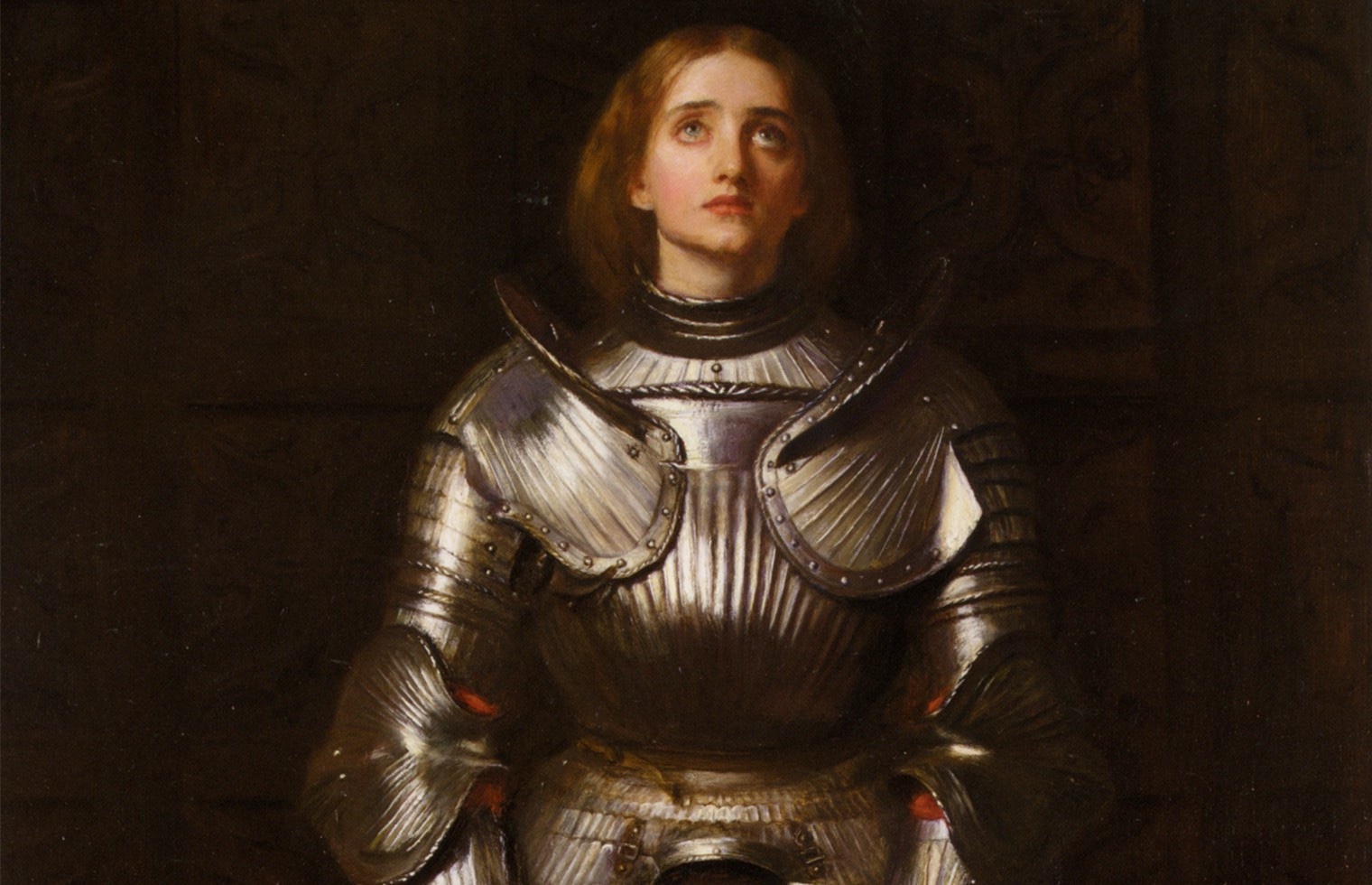As we set up our notes for the day, my fourth grade students are quick to point out the large empty rectangle in the corner of the chalkboard. I tell them to copy it down and we will talk about it later. At this point in the year, we have just finished studying the the Hundred Years War, a war that unexpectedly had tipped to the brink of victory for the English until the arrival of the unexpected figure of Joan of Arc. We have discussed her remarkable youth and victorious battles. Yet, yesterday in class, we learned why Joan ultimately faced execution at the hands of the English. Some students welled up with tears and others were ignited at the injustice of it all. But today, we will discuss redemption.

Joan died condemned as a heretic, all the while trusting in God’s plan for her and the sacrifice she was making for her beloved France. She was a peasant, uneducated, poor, and totally unlikely to be a significant figure in history. Quite the opposite was true of her condemner, Pierre Cauchon. He was brilliant, well-educated, well-known, and ambitious. For these reasons he was chosen as the prosecutor of Joan’s trial. If he could come up with a way to find Joan guilty, he would be given a coveted role in the church, the Bishopric of Rouen, France. He quickly got to work gathering and forging evidence against Joan. After a month of public trial and Joan responding as quick-wittedly as a nobleman, he was forced to move the trial indoors, away from the public. In the next two months, Cauchon was able to make a strong enough case to sentence Joan to death by burning at the stake. As she died, she asked for a cross at the level of her eyes, an image she could focus on as her body was incinerated and her soul was taken to the next life.
Beaming with pride that he had accomplished his goal, Cauchon assumed he would be given exactly what he wanted. He was shocked to learn he would be made a bishop, but in the tiny no-name town of Lisieux, France. He spent the rest of his life in this little town, building a cathedral in the middle of the city, and dying without the power he had given his soul to obtain. He was buried in a place of prominence under the altar in the cathedral.
Almost twenty years after Joan’s death, her mother Isabelle begged for a retrial so her daughter’s name could take its rightful place in history. Her request was granted and since all of Joan’s trial was written down, it could now be evaluated honestly. Joan was declared innocent of all charges and Pierre Cauchon was post-humously excommunicated and declared a heretic.
On a trip to France, I myself went to see if an excommunicated bishop was still honorably buried under a church altar. I walked into the church and saw no sign of his burial site. There was no official tour guide so I pulled the janitor aside to ascertain the information I was so curious about. “Oh, Pierre Cauchon,” he said, “He has been moved over here.” He walked me to the side of the church and pointed to the floor. There were many marble slabs on the floor but this one was a large rectangle that barely had an outline of a human body etched on it. It was non-descript and un-named. Pierre lies there in silence while people walk right over him. Joan, on the other hand, has been immortalized on innumerable street corners in France. She died without vindication, but redemption found her and her story proclaims the value of patriotism and piety.
The chalk outline of a rectangle box rests on the board throughout class and my students consider what it really means. Today they offer considerations like “It stands for how little we remember someone who wanted everything for himself and who was willing to sacrifice a young peasant girl for his own gain.” Another student asked if we could leave the empty box on the board all year as a reminder not to seek the wrong things in life. Ultimately, as my fourth grade students learn this story and understand the meaning of the empty rectangular box, they summarize the story beautifully in their own words: “Goodness wins.”

